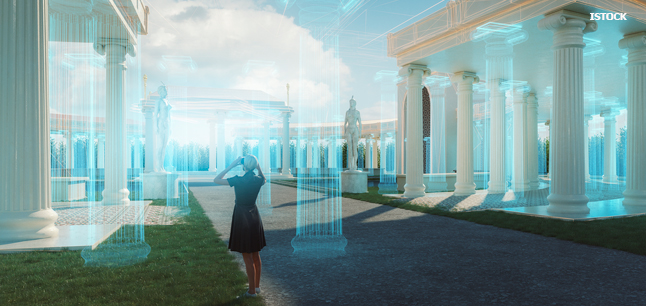
Virtual reality (VR) and Augmented reality (AR) developers write and develop code for virtual reality (VR) or augmented reality (AR) software. Users interact with virtual reality environments by wearing ocular headsets or goggles where they feel immersed in an imaginary environment. Users can use augmented reality environments through their mobile devices where they can visualise and interact with virtual images (for example Pokemon Go).
VR and AR experiences are utilised across many sectors, such as gaming, heritage, tourism, healthcare, and education.
They may also be called Extended reality (XR) programmer, Mixed reality (MR) programmer or VR engineers.
You could be:
The figures below are only a guide. Actual pay rates vary, depending on:
Starting salaries tend to be around £30,000 a year rising to £45,000 a year. With experience this could rise to between £50,000 and £60,000 a year or more.
Salaries for freelance developers may vary considerably, but the latest reported average daily rate according to IT Jobs Watch was £350 per day (February 2024).
Workforce Employment Status
LMI data powered by LMI for All
Skilled VR and AR developers are in demand for this rapidly growing technology, so job prospects are excellent. You could work in technology or gaming companies, design and creative agencies, educational companies, VE/AR start-up companies or tourist organisations. You will find jobs advertised on the internet on sites such as UK Gamesmap.
Workforce Education Levels (UK)
LMI data powered by Lightcast
Employment
LMI data powered by Lightcast



 2030
2030
 2025
2025

 2030
2030
LMI data powered by Lightcast
You need to have:
You need to be able to:
VR, AR and MR (mixed reality - a mix of virtual and augmented realities) are collectively known as extended reality, or XR technology. This use with various tools and technologies is sometimes called immersive technologies.
Many industries are increasingly using this technology including education, gaming, finance, tourism, healthcare and retail. For example, the heritage sector can use both augmented and virtual reality, to recreate a destroyed venue or building and re-enact scenes with virtually created characters. Virtual reality can be used in medicine and all areas of healthcare from patient experience to medical training: medical students can learn about surgical procedures, or patients can use it in therapy, for example to overcome phobias.
Because of the wide range of applications and possibilities, Creative Scotland reported in January 2024 that £6 million is being funded into a 3-year cross-UK ‘Immersive Arts’ project to explore the potential of virtual, augmented and mixed reality technologies. It will give UK artists the opportunity to access training and facilities to help them put their ideas into action.
Courtesy of HTC Vive
The following organisations may be able to provide further information.
Creative Scotland
E-mail:
enquiries@creativescotland.com
Website:
http://www.creativescotland.com/
Website (2):
http://opportunities.creativescotland.com/
Facebook:
https://www.facebook.com/CreativeScotland
ScreenSkills
Tel: 020 7713 9800
E-mail:
info@screenskills.com
Website:
https://www.screenskills.com
X:
@UKScreenSkills
Facebook:
https://www.facebook.com/UKScreenSkills
ScreenSkills works with the UK’s screen-based creative media industries to develop skills and talent from classroom to boardroom.
VR/AR Association
E-mail:
info@thevrara.com
Website:
https://www.thevrara.com/
X:
@thevrara
Facebook:
https://www.facebook.com/vrarassociation